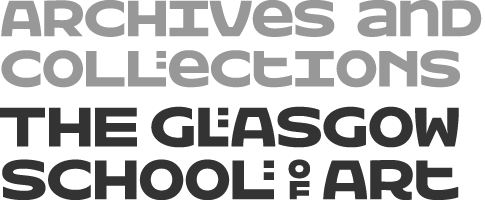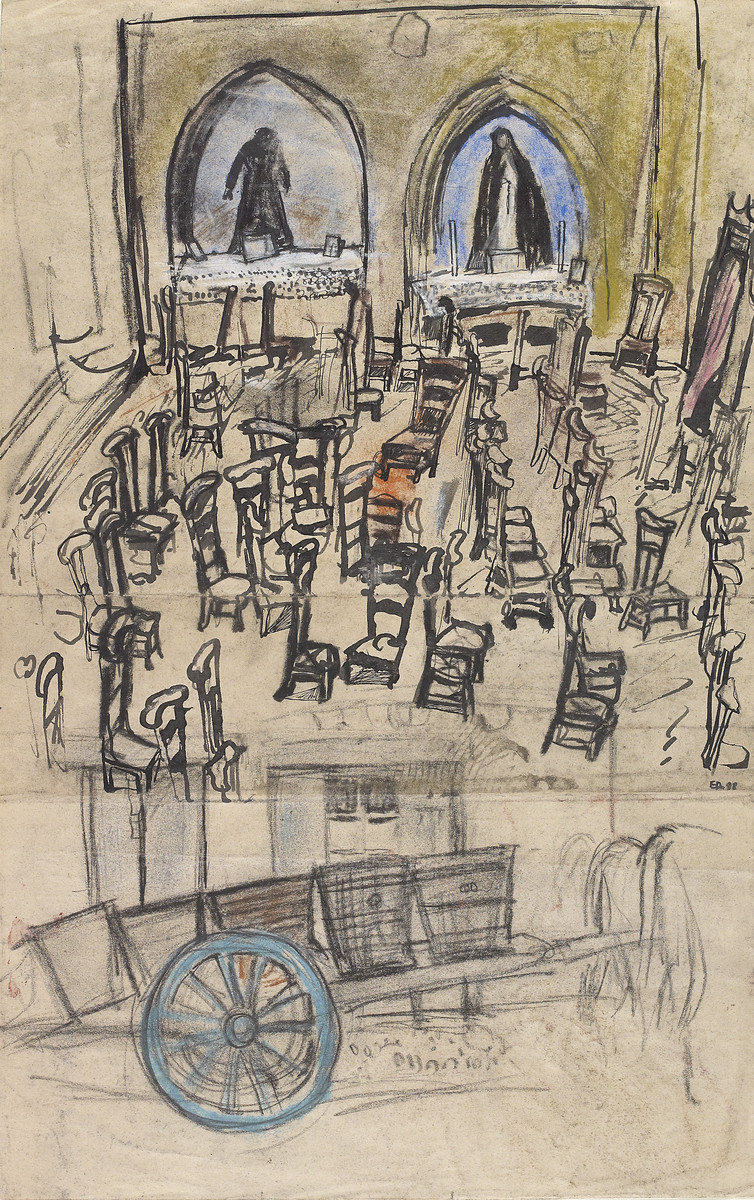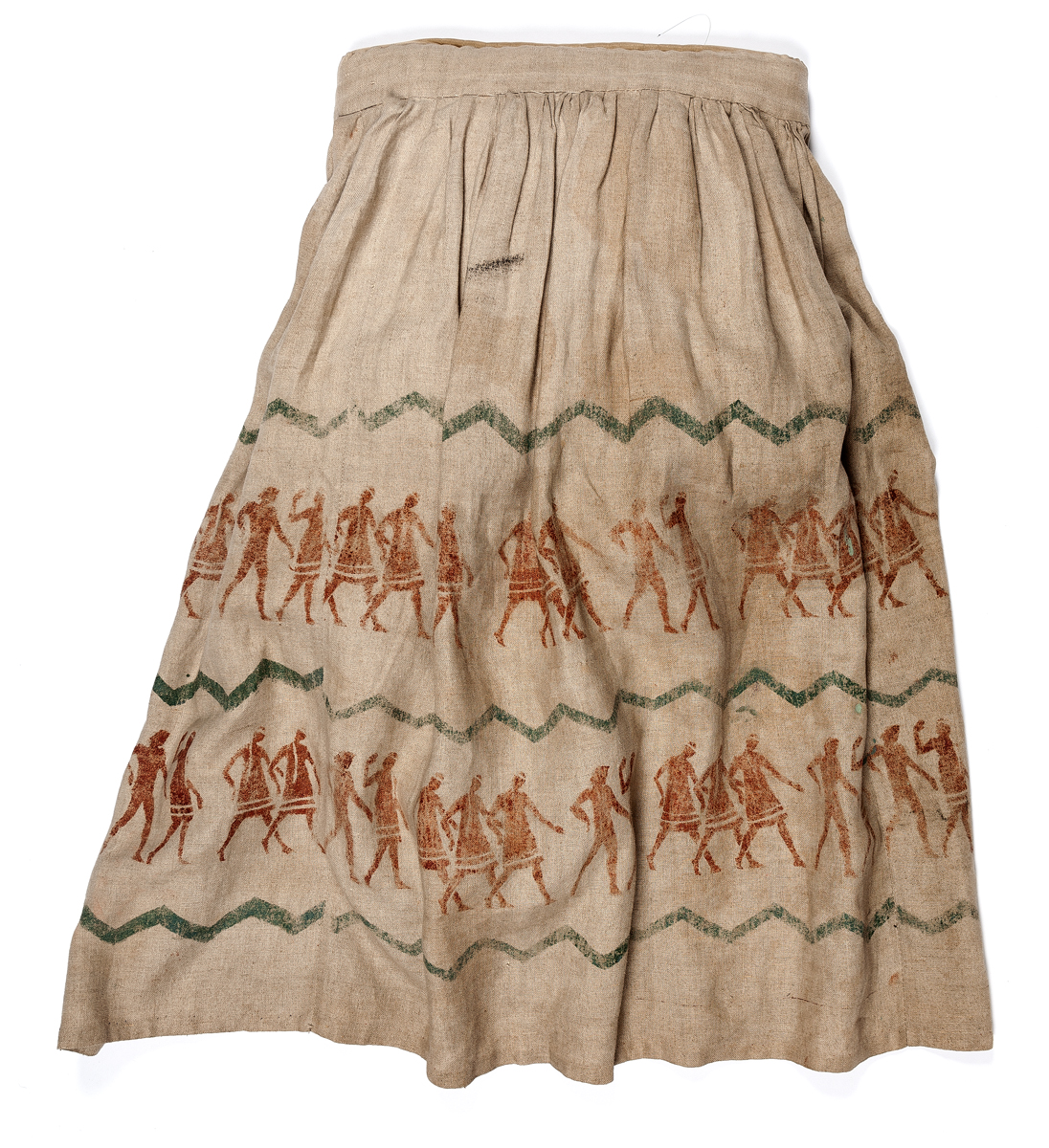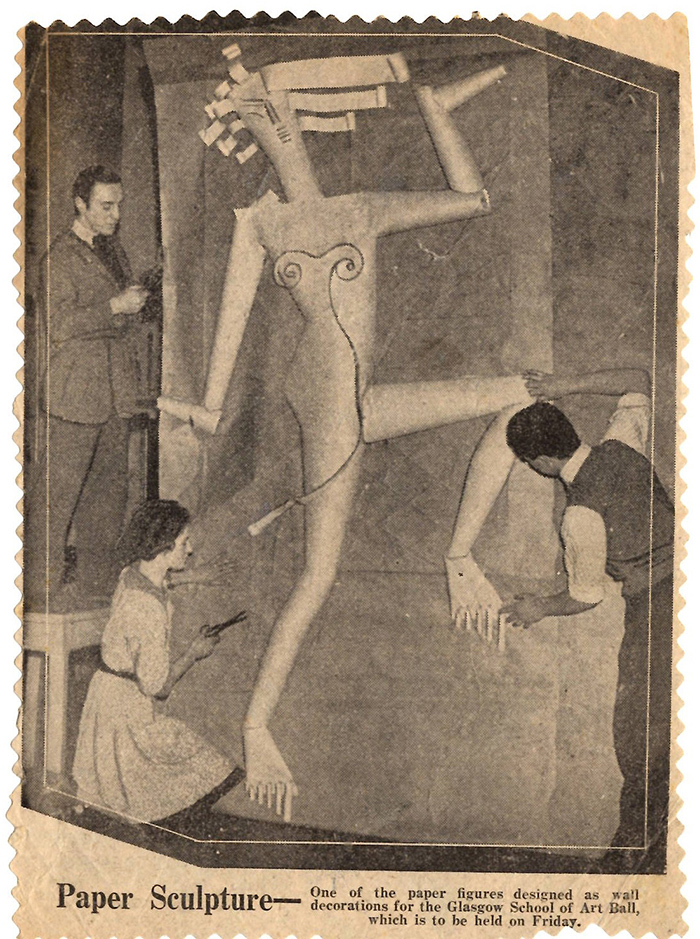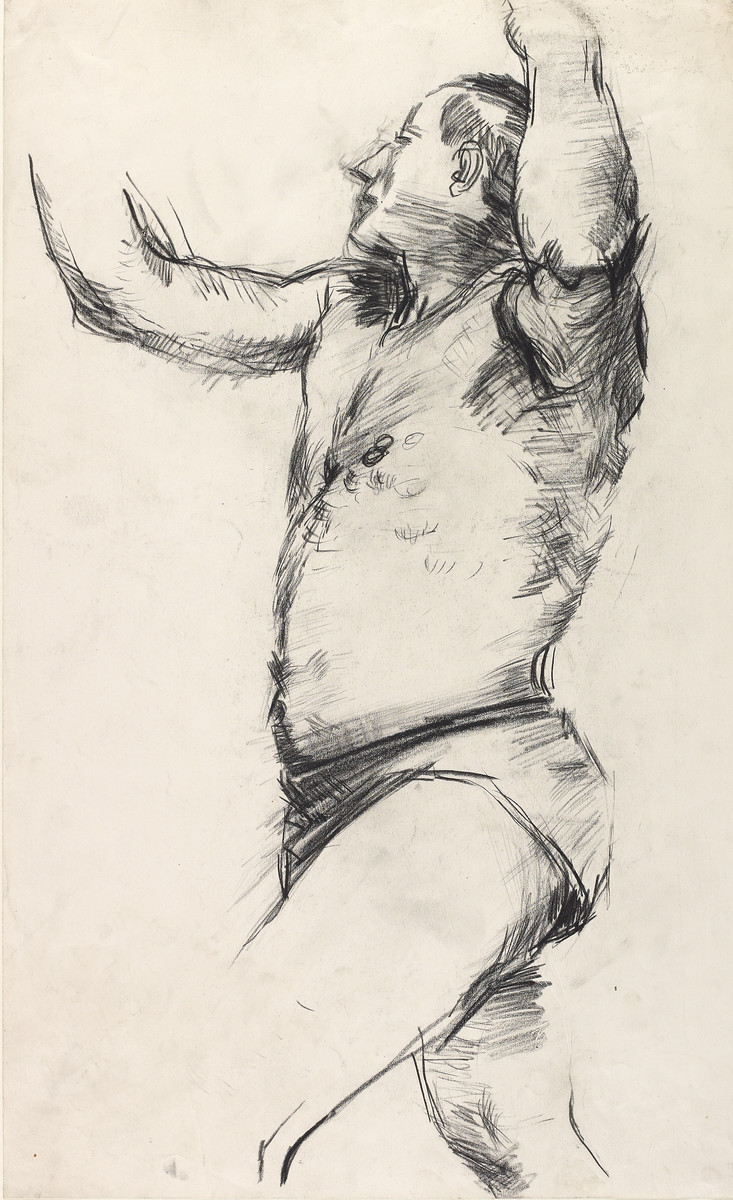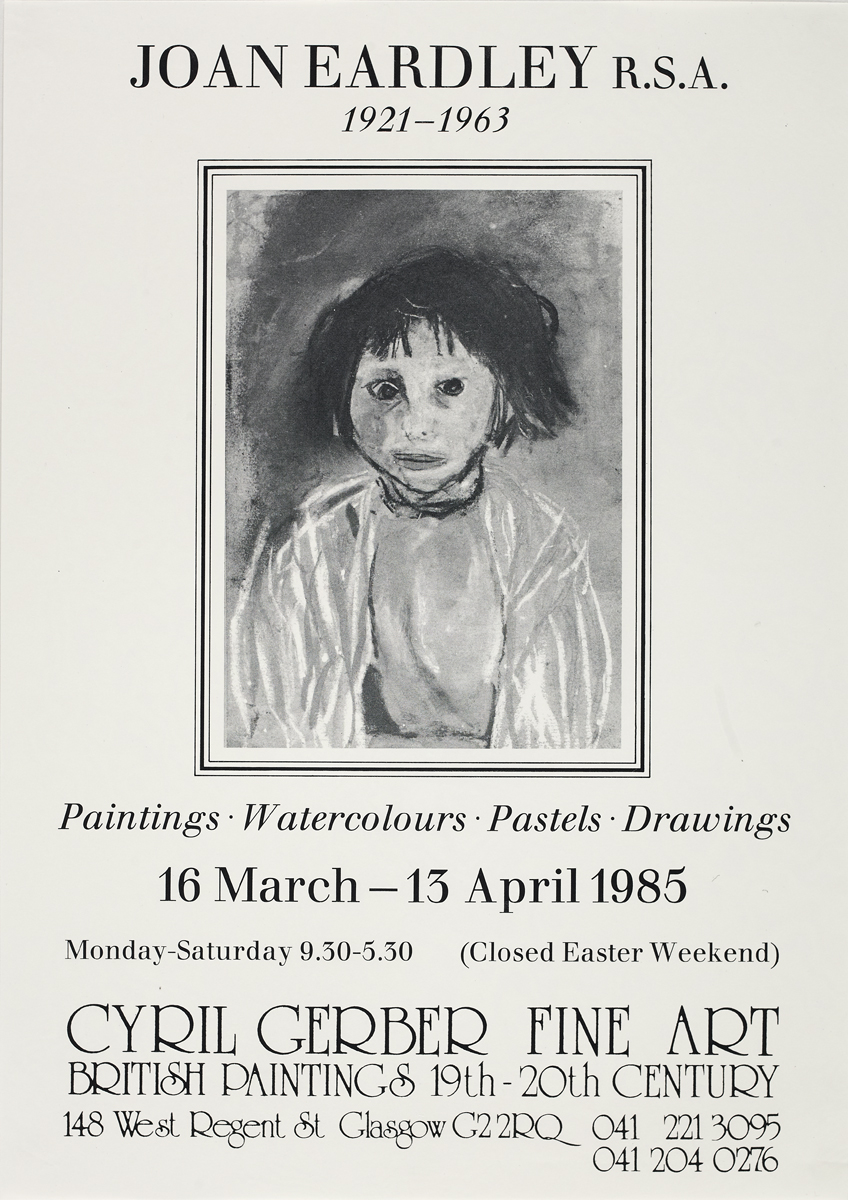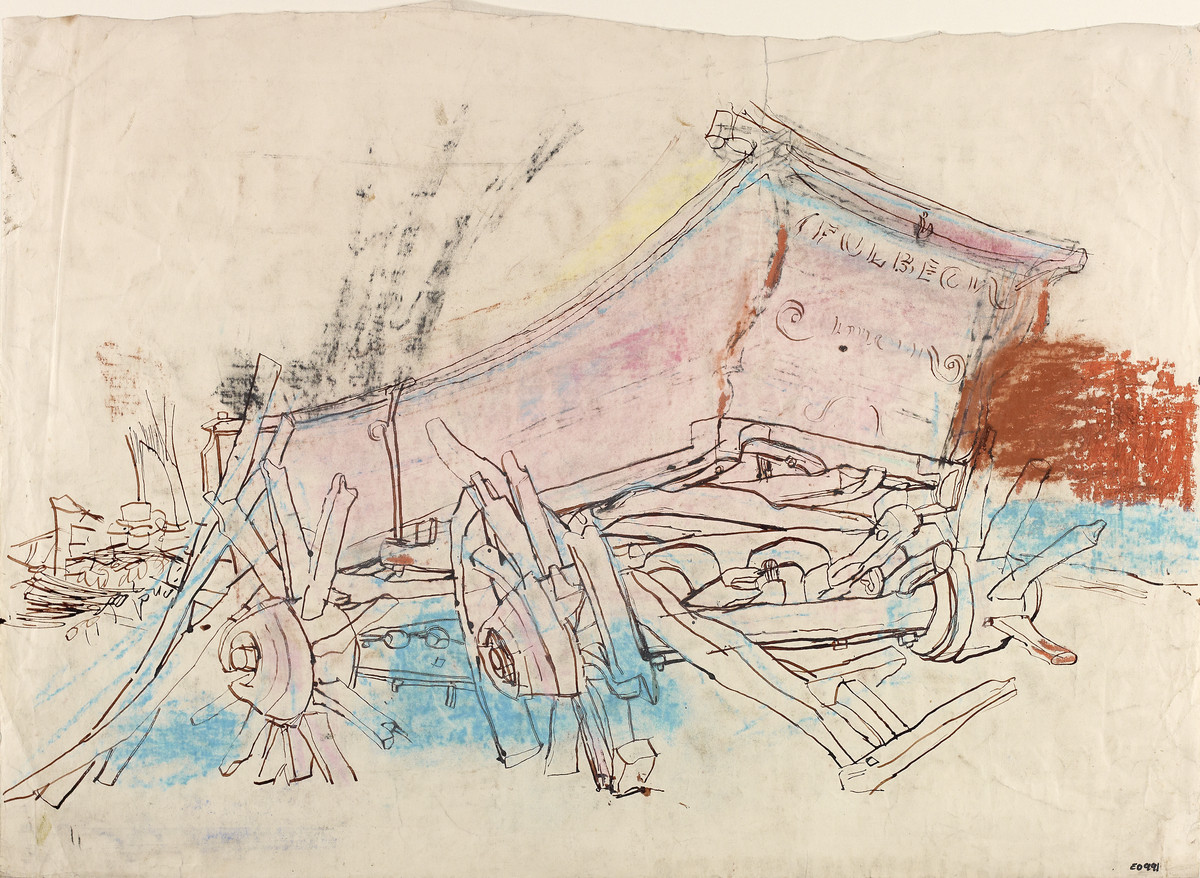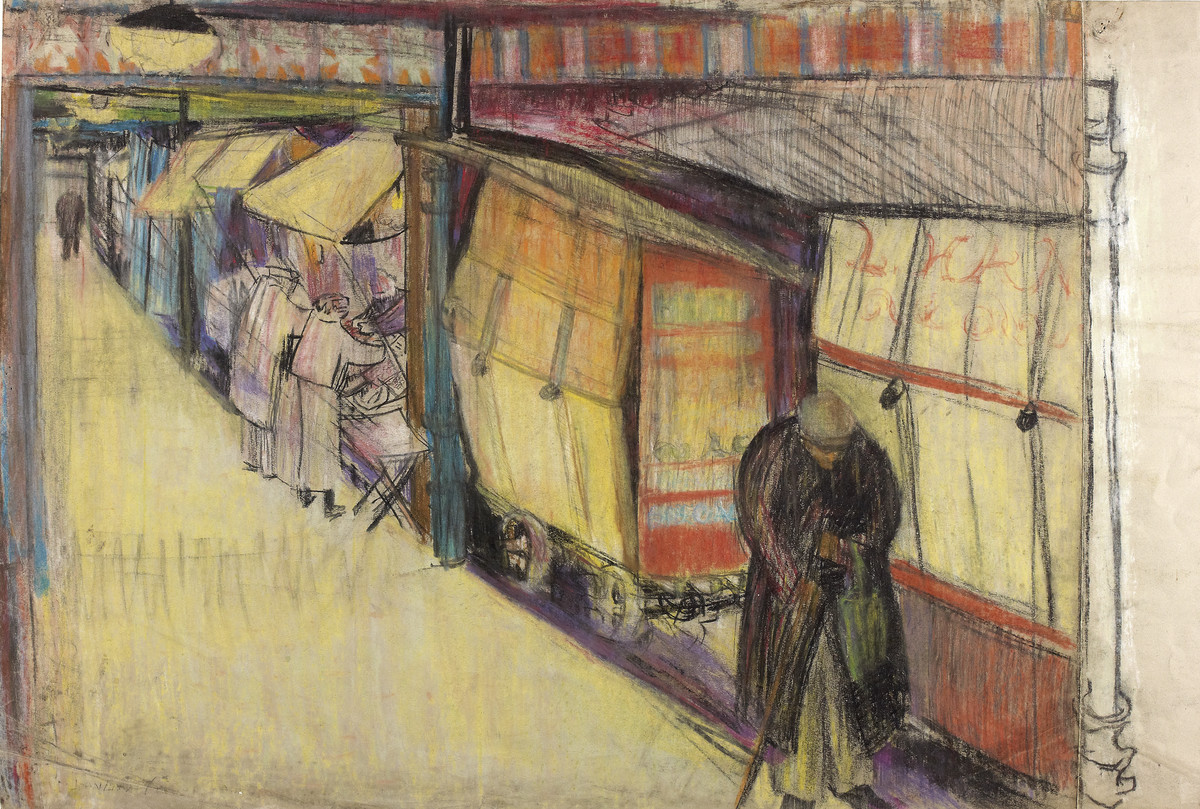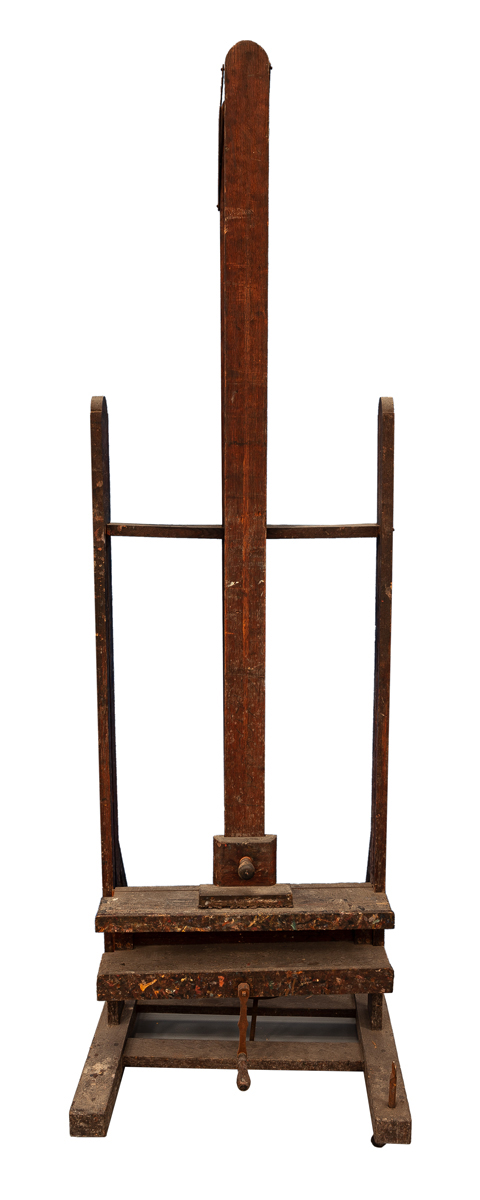Joan Eardley
Joan Eardley (1921-1963) was a distinctive and critically acclaimed painter who studied at The Glasgow School of Art between 1940 and 1943. Best known for urban, realist paintings of children in the streets of Townhead, Glasgow and her semi-abstract, highly expressive land and seascapes around Catterline, Aberdeenshire, made in the decade before her death in 1963, she remains one of Scotland’s best-known twentieth century artists.
Her drawings from the 1940s encompass rural landscapes and farm animals to inner city markets and canals, life drawing, portraits and figures to architecture, cityscapes and interiors. They recorded places ranging from student life drawing classes at GSA to San Marco in Venice, from farm wagons in Lincolnshire to the Barras market in Glasgow.
As a student during wartime, conscription meant that Eardley and her peers, mostly women, formed a far smaller cohort of students than was usual at GSA. Under the tutelage of Hugh Adam Crawford (1898-1982), her classmates and peers included close friend and collaborator Margot Sandeman (1922-2009), the curator and critic Cordelia Oliver (1923-2009) (who would go on to write the first critical biography of Eardley and curate a number of posthumous exhibitions of her work), and the internationally renowned artist and poet Ian Hamilton Finlay (1925-2006).
After a short, unsuccessful period at Jordanhill Teacher Training College, Eardley became a boat-builder’s apprentice (a reserved occupation) before resuming her education at the Patrick Allan Fraser School of Art at Hospitalfield, Arbroath, under James Cowie in 1947. She returned to GSA to complete her post-diploma scholarship, graduating in 1948, before taking up her award of both a RSA Carnegie Scholarship and a Glasgow School of Art Travelling Scholarship which allowed her to spend extended periods in France and, in particular, in Italy between 1948-49. On her return to Glasgow, she exhibited many of the works made during this time in her first solo exhibition, held at The Glasgow School of Art’s Mackintosh Building in 1949. Examples of works made during this period include San Rufino, Assisi, Italian Hill Town, Interior of an Italian Chapel and Church interior, Basilica de San Marco, Venice.
Hugh Adam Crawford strongly encouraged his students to develop their skills in drawing, a practice Eardley continued throughout her life, while wartime rationing necessitated an inventive and resourceful approach to the use of materials: pen, ink, chalks, watercolour and blue Biro all feature in the artist’s early drawings. Later in her career Eardley used the back of finished canvases for new paintings, and found imaginative ways to paint en plein air in inclement weather. A number of works in the GSA archives appear to be quick sketches or preparatory drawings using whatever materials were close to hand: the lined writing paper of Bridge in Venice is one such example, while the artist’s colour notes are recorded as part of the black chalk drawing An Italian Hilltown (1948-1949).
Eardley’s most celebrated works of the late 1950s and early 1960s have their origin in these early works. Along with paintings and drawings, the Eardley collection at GSA includes letters, the artist’s easel, scholarship reports and photographs, some of which feature in The George and Cordelia Oliver Archive. Together, these art works and artefacts form a unique and invaluable record of Eardley’s education and training. They reveal the early development of her work and record the formative years of an artist who would go on to become one of Scotland’s most dynamic and celebrated artists.
